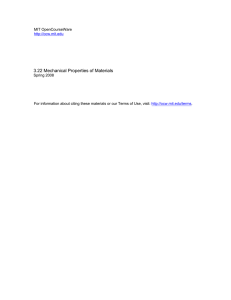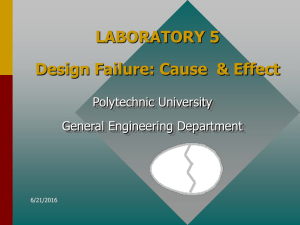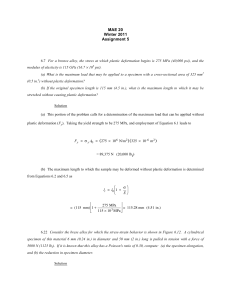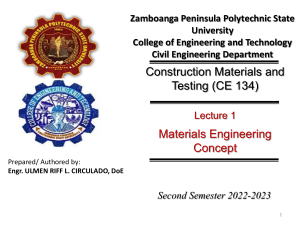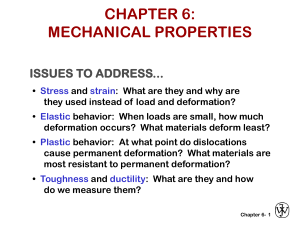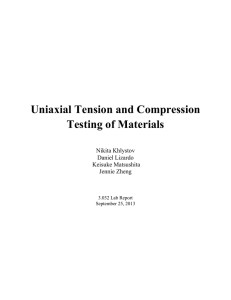This problem illustrates some "plastic strain" concepts and some calculation... treating plasticity. 22.314/1.56/2.084/13.14 Fall 2006 Problem Set V
advertisement
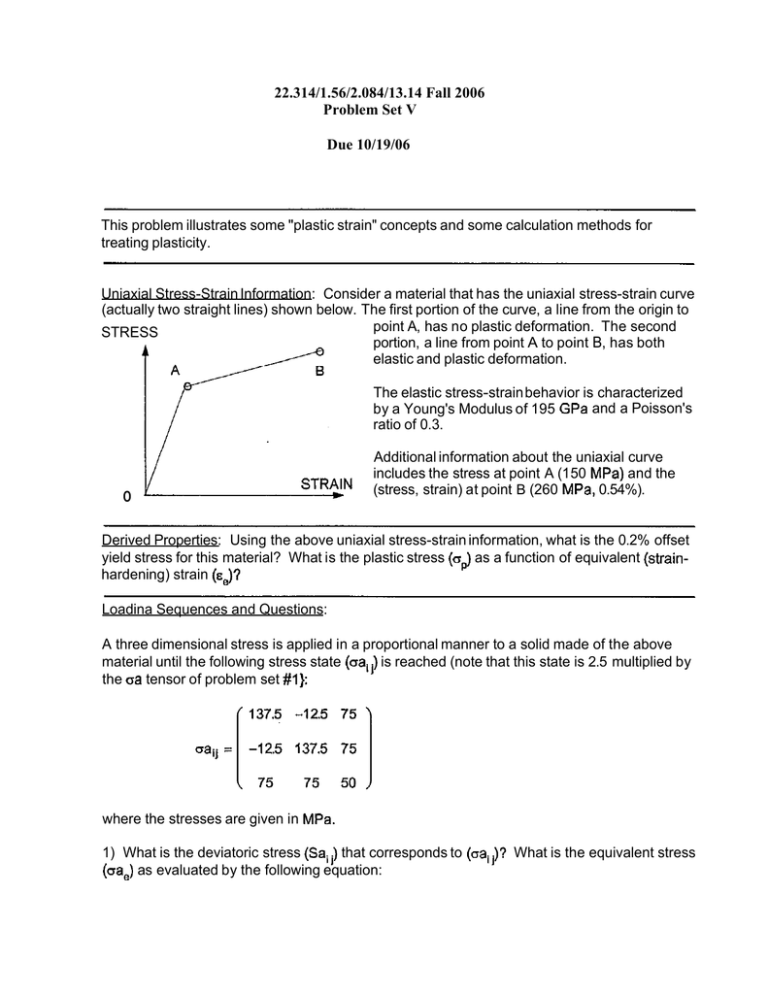
22.314/1.56/2.084/13.14 Fall 2006 Problem Set V Due 10/19/06 This problem illustrates some "plastic strain" concepts and some calculation methods for treating plasticity. Uniaxial Stress-Strain Information: Consider a material that has the uniaxial stress-strain curve (actually two straight lines) shown below. The first portion of the curve, a line from the origin to point A, has no plastic deformation. The second STRESS portion, a line from point A to point B, has both elastic and plastic deformation. The elastic stress-strain behavior is characterized by a Young's Modulus of 195 GPa and a Poisson's ratio of 0.3. 0 Additional information about the uniaxial curve includes the stress at point A (150 MPa) and the STRA~N (stress, strain) at point B (260 MPa, 0.54%). Derived Properties: Using the above uniaxial stress-strain information, what is the 0.2% offset yield stress for this material? What is the plastic stress (cp)as a function of equivalent (strainhardening) strain (E,)? Loadina Sequences and Questions: A three dimensional stress is applied in a proportional manner to a solid made of the above material until the following stress state (oa,J is reached (note that this state is 2.5 multiplied by the oa tensor of problem set #A}: where the stresses are given in MPa. 1) What is the deviatoric stress @aij) that corresponds to (caij)? What is the equivalent stress (oa,) as evaluated by the following equation: Show that this equivalent stress is equal to the previously defined "von Mises stress." 2) What strain tensors (elastic, mechanical, and total) exist when aa is reached? The stress on the same solid is next proportionally reduced until zero stress remains. 3) What strain tensors (elastic, mechanical, and total) exist when zero stress is reached? The same solid is subjected to a different proportional loading to reach the stress state (abii), where: where the stress is given in MPa. 4) What strain tensors (elastic, mechanical, and total) exist when ab is reached? The stress is next proportionally reduced until zero stress remains. 5) What strain tensors (elastic, mechanical, and total) exist when zero stress is reached?


